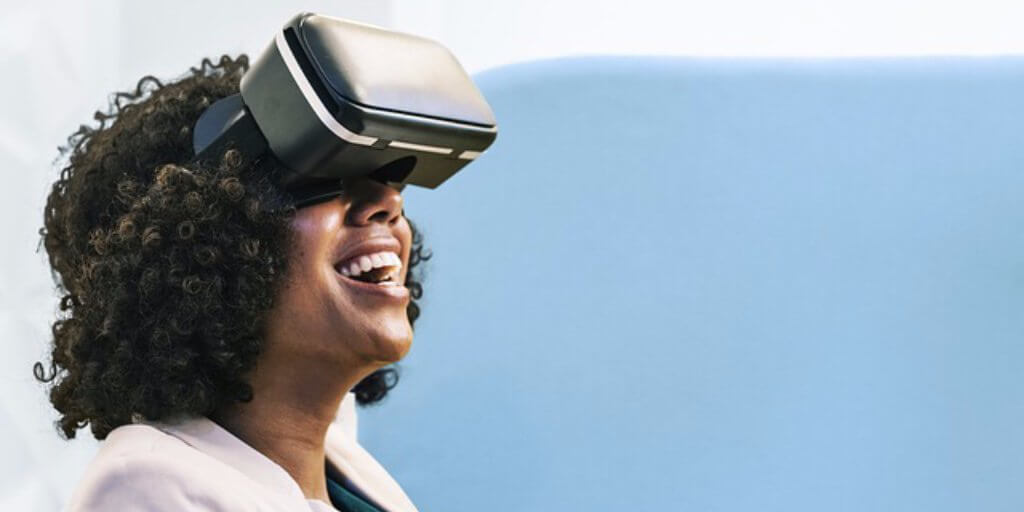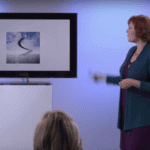The Brain Science Behind VR

The past two years have seen a sharp increase in the purchase of VR headsets, both for personal recreation and professional development. Let's explore what makes VR one of the most powerful technologies now available and why we should be careful with how and when we use it.
Virtual reality (VR) is powerful because it replicates the first-person point of view (POV) in our own bodies, which allows for deep immersion in an experience. It's not perfect, but it's realistic enough to elicit biological responses in the body. I experienced this firsthand when my family got a VR headset over the holidays. I watched the video of climbing El Capitan in Yosemite National Park and felt the adrenaline rush as if I was really standing on a ledge looking down thousands of feet to the ground below. While watching an African safari, I startled when I looked over my shoulder to find a lion sniffing me. And I felt real motion sickness riding a virtual roller coaster, to the point that I had to take off the set before I lost my lunch. While my rational brain knew these were filmed images, because I could turn my head and see in all directions, my brain and body responded as if I was really there.
I wasn't imagining things. Studies are showing that VR experiences code in the body like a lived experience. In other words, we can use VR to create realistic embodied memories. In a 2019 study, several researchers at the Laboratory of Cognitive Neuroscience in Geneva, Switzerland, discovered that VR experiences in which people see some aspect of "their" body, like an arm or leg, have better and longer recall of those events, statistically similar to a lived experience.
Originally, the researchers were interested in whether VR could be used as a reliable tool in scholarly memory studies; they concluded that, in fact, VR can be a stand-in for a real experience.
In a study at Stanford University's Virtual Human Interaction Lab, similar findings show that children know the difference between their own lived memories and stories told to them about an experience they could have. In this case, researchers described how a child swam with two friendly orcas. Later, the children clearly stated that it did not happen in real life. However, children are less certain when they put on a VR headset and virtually swim with the orcas. Later, when asked if they have ever done that, some "remembered" the experience as if it really happened.
We can surmise that VR creates experiences that the human body perceives as real and stores as a memory. (As a parent, I need to comment here that we should all be careful of allowing children to play violent games on VR sets. Until the research is more clear, I am concerned that there seems to be a real possibility of children having "memories" of harming people.)
The upside is that VR is being used to drive all kinds of new advances in professional learning. Companies are training employees in virtual settings, giving them real memories of places and skills.
For example, one oil company has filmed their deep-sea ocean rigs so that employees can become familiar with these dangerous work environments before arriving. A cruise liner is training servers in a virtual dining room since the windows of time to do so in person is limited. As a result, the wait staff are able to deliver exceptional service from the first encounter with customers. Similarly, a plane manufacturer is using VR to give new employees the experience of riveting the fuselage, incorporating footage of a top-performing employee. When the trainees look down, they see "their" hands doing the correct actions. Obviously, VR cannot replace doing real work in real time, but it can jumpstart an employee's skills.
Virtual reality has also been shown to make people more empathetic and compassionate. Dr. Jeremy Bailenson has done a series of studies on this topic. In one, some participants were taken through a VR experience, called Becoming Homeless (a control group did not). Later, the group who did the VR were more empathetic toward the homeless and more likely to sign a petition supporting affordable housing than the other participants.
In other studies, Bailenson took people through a virtual experience of racial discrimination and they became less biased to people of color; likewise, people who virtually experienced aging became less ageist. Another series of four studies of different age groups shows that VR can even make people more curious and committed about issues like climate change.
And amazingly, doctors and scientists are now using virtual reality to regrow neurons and help people regain movement after injuries. Virtual reality headsets allow patients to look down and "see" their legs walking or arms moving. This mimics how we originally learned to move our bodies and how the brain first wired those neurons of movement. This same process helps patients with prosthetic limbs learn how to move those limbs and regain mobility more quickly. Researchers have even seen neural growth in paraplegics by having them watch their legs moving in a virtual reality (VR) headset for an hour twice a week. Several patients have been able to feel their limbs after consistent treatment.
For clarity, VR is one of many tools that exists on the virtual continuum, also known as extended reality or XR. On one end, you have the real environment, the tangible world that we see, touch, and engage with in real time. At the other end is the virtual environment, or VR, a three-dimensional computer-generated place, which can either mimic or replicate something real or be a fantastical creation.
In between those two realities is augmented reality, AR, and mixed reality, or MR. According to a 2018 report titled Technologies with Potential to Transform Business and Business Education, "AR enhances real-world experiences by adding virtual, computer-generated components, such as digital images, data, or sensations as a complementary new layer to create enhanced interactions." MR combines elements of AR with VR. The person can see the real world but can simultaneously see virtual objects that are anchored to the real environment and which can be interacted with.
While VR is part of a spectrum of extended reality, brain studies show that VR is unique among other types of XR in offering the possibility of "forming a memory," a stand-in for a real experience. VR is already being applied in numerous ways, offering exciting new advances in professional learning (among other disciplines), and we're only just beginning to explore the possibilities of how it can enhance education and learning in a broader sense.
Related Blogs
JOIN OUR COMMUNITY
Be the first to know of Dr. Britt Andreatta's latest news and research.





